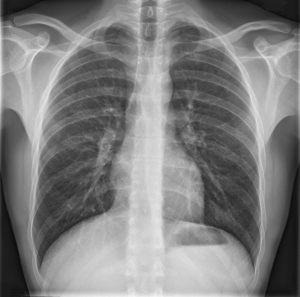by
John W. Mitchell, Senior Correspondent | January 22, 2019
In a study of half a million chest X-rays, an AI application can alert radiologists to abnormal findings that required priority attention.
This resulted in improving turnaround time from 11 days to three days in reporting critical findings. The study team sees the AI app as a solution to a radiologist shortage in the U.K., where at any time more than 300,000 X-rays are waiting over 30 days for reporting.
Chest X-rays are routinely performed to diagnose and monitor a wide range of conditions affecting the lungs, heart, bones, and soft tissues.



Ad Statistics
Times Displayed: 365166
Times Visited: 6993 Quality remanufactured Certified Centrifuges at Great prices! Fully warranted and backed by a company you can trust! Call or click for a free quote today! www.Centrifugestore.com 800-457-7576
“I knew that over 90 percent of all data stored by the hospital consisted of medical images, and saw an opportunity to build AI systems to automatically interpret radiological scans,” Giovanni Montana, professor of data science, International Digital Laboratory, WMG, University of Warwick in the U.K. told HCB News. “I teamed up with one of my colleagues at that time, Dr. Vicky Goh, who is Radiologist and Chair in Cancer Imaging, and we decided to work on a system to automatically triage and prioritize chest X-rays.”
In the process of building the AI system, the team developed and validated a Natural Language Processing (NLP) algorithm that can read a radiological report, understand the findings mentioned by the reporting radiologist, and automatically infer the priority level of the exam. By applying this algorithm to the historical exams, the team generated a large volume of training exams that allowed the AI system to understand which visual patterns in X-rays were predictive of their urgency level.
“The AI’s performance is sufficiently high to be deployed in a clinical setting for prioritization purposes, as we’ve demonstrated in the article,” said Montana. “Our aim over the next few months is to further improve the algorithm’s performance and accurately discriminate between all possible radiological abnormalities seen on the X-ray, as well as provide an automated 'second reading' system.”
In principle, any IT system currently in use in Radiology Departments of public and private hospitals can adopt their AI system with minimal effort, according to Montana.
“It can be easily integrated with any existing PACS solutions,” he said.
The team recently secured a two-year Wellcome Trust Innovate Award to continue work on their chest X-ray app, Montana added. They have also formed a consortium of several NHS Trusts in the U.K. that are supporting the project and are providing access to over three million reported X-rays. Next up is a prospective study in 2019 and research to perform a more direct comparison between the AI and human performance.
Also, there are plans to make the software commercially available within the year so any hospital can benefit from the app. As part of the Wellcome Trust project, Montana said they are planning to develop a mobile application to support less developed countries where PACS systems are not yet available.

